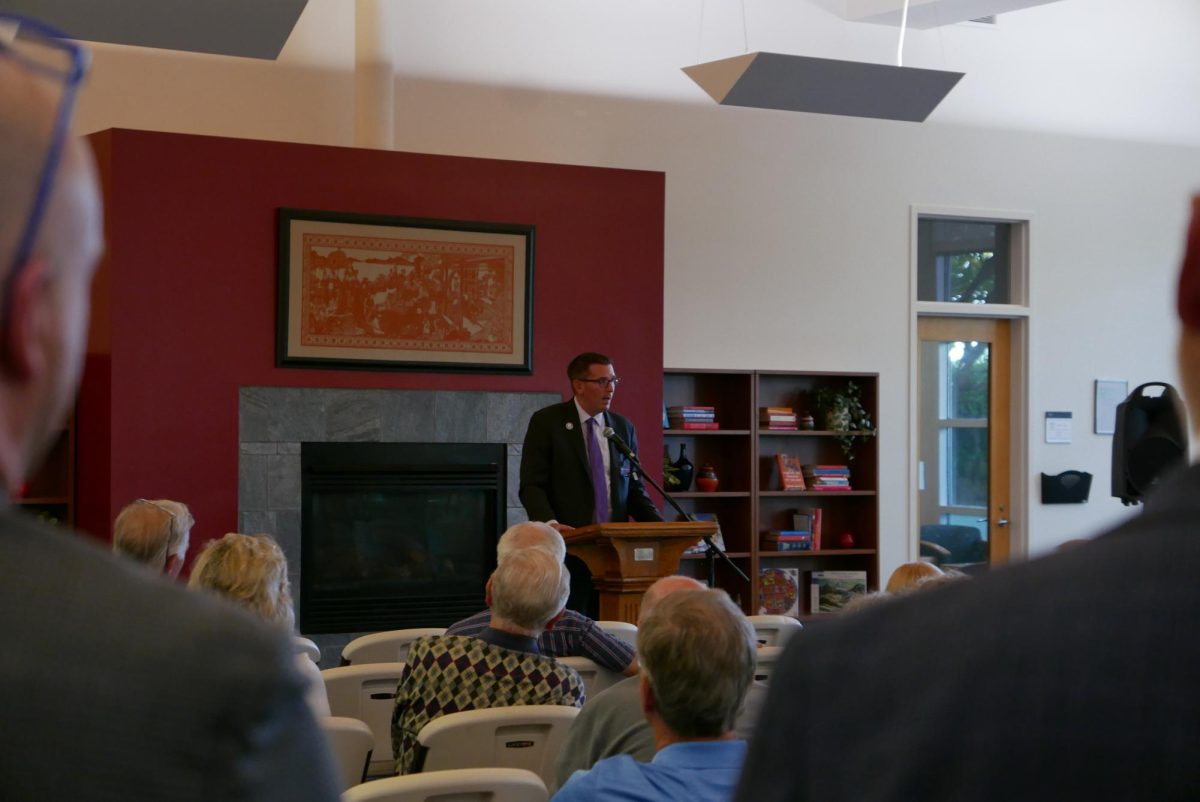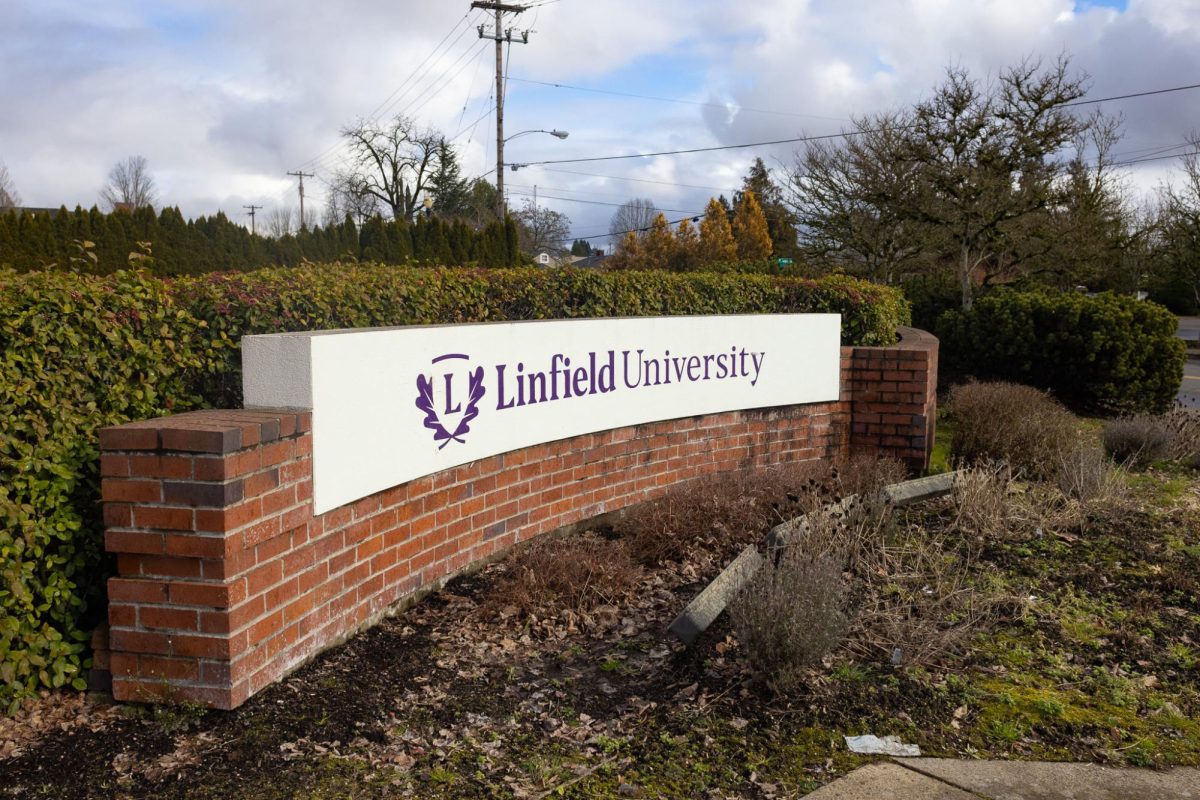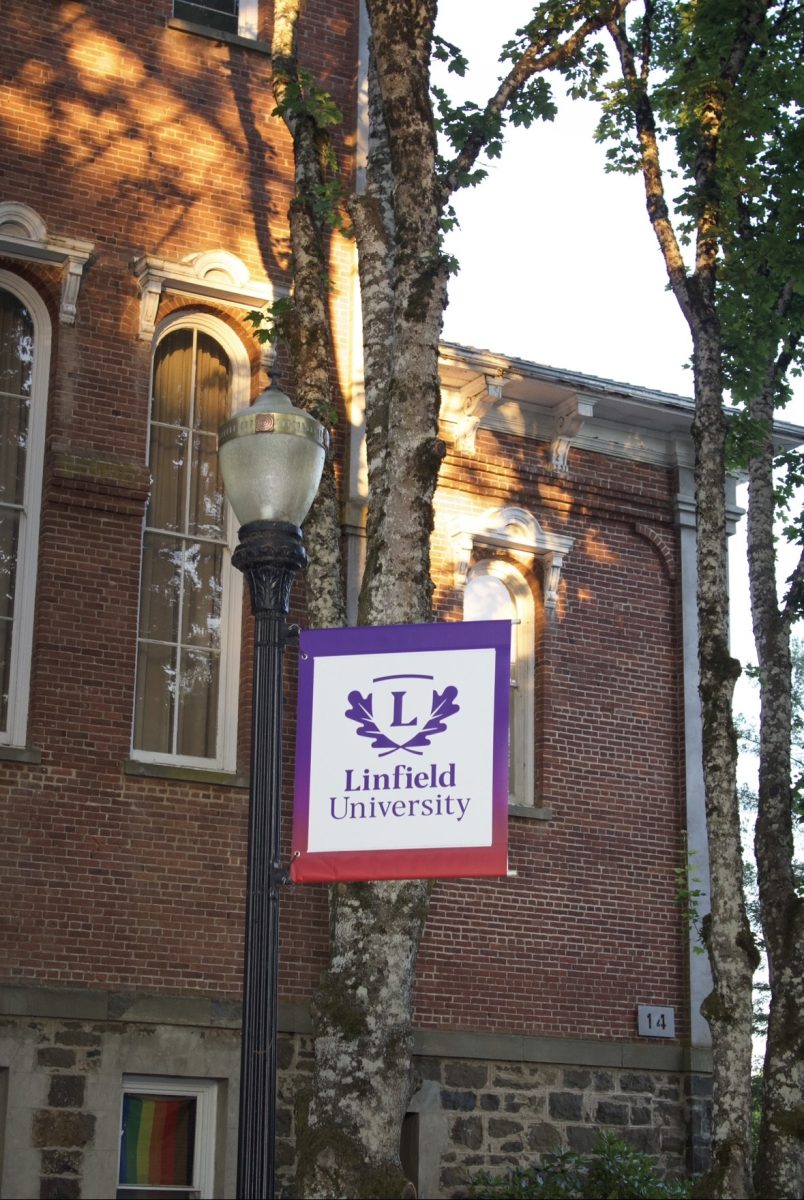As China races to take over Japan as second in the rank of gross domestic product this year, Chinese power also will increase at Linfield.
President Thomas Hellie will visit five Chinese cities starting March 18 to push for more Chinese students to come to Linfield and for study-abroad programs for Linfield students.
Hellie will meet Linfield alumni, students and parents in Chinese high schools and universities, including Sias International University. The five cities for this weeklong trip are Beijing, Tianjing, Zhengzhou, Chengdu and Shanghai.
To prepare for the trip, Hellie discussed college issues with Chinese students and faculty members at Linfield on March 3 in Jonasson Hall. The discussion detailed how to rethink Linfield’s education, housing, food and culture.
During the discussion, Hellie said he was impressed that more Chinese students are double majoring and chosing to study a third language.
“We want to build a
deeper relationship with China, which has the largest population, the greatest culture and growing economic power,” Hellie said.
This will be his first trip to China, so two faculty members, Lisa Knodle-Bragiel, director of admissions, and Chris Keaveney, professor of Japanese and co-chair of the Department of Modern Languages, will accompany Hellie as a part of the delegation.
“It’s a great opportunity for me to talk with Chinese parents and know the aspects of their children studying abroad,” Keaveney said.
Besides Hong Kong Baptist University, the China Studies Institute, housed on the Beijing University
campus, is the only study-abroad program in China for Linfield. Last year, only one Linfield student went to Beijing to study.
“Honestly, we have a limited number of Linfield students studying the Chinese language and going to Beijing, but I am actively promoting Chinese language study and Asian study on campus,” Keaveney said. “China is growing in not only economy, but in business with the United States. I’m wondering, ‘How could you not be interested in China?’”
Keaveney said requirements for Linfield students who want to study in Beijing include taking at least one year of Chinese-language courses beforehand. He said he hopes increasing Chinese students would help Linfield students gain a greater interest in China and Chinese studies.
He said he noticed that Chinese students in his classes have dramatically
different perspectives, which are valuable for diversity.
“We have 28 Chinese students of 115 international students currently at Linfield, the largest percent of population of international students,” Shaik Ismail, director of International Programs, said. “It’s time for the top person at Linfield to go to China after some faculty members have been to China.”
Ismail also said he worries about a big increase in Chinese students at Linfield, because a single population of one country is not good for the long term.
In Linfield’s history, there was a sudden increase of student population from the Middle East in the 1970s and from Japan in the 1980s. The sudden increase of Chinese students happened during the last two years.
“We are responsible for these increases and make sure those students are successful at Linfield,” Ismail said. “We can’t just increase Chinese students from 20 to 70 if we don’t know how [to do this], but we didn’t control the percent of population of any countries.”
The International Programs Office has discussed with other Oregon schools with large percentages of Chinese students about making sure they pass the language barrier and integrate into the new environment.
Yin Xiao
Culture editor Yin Xiao can be reached at [email protected]






